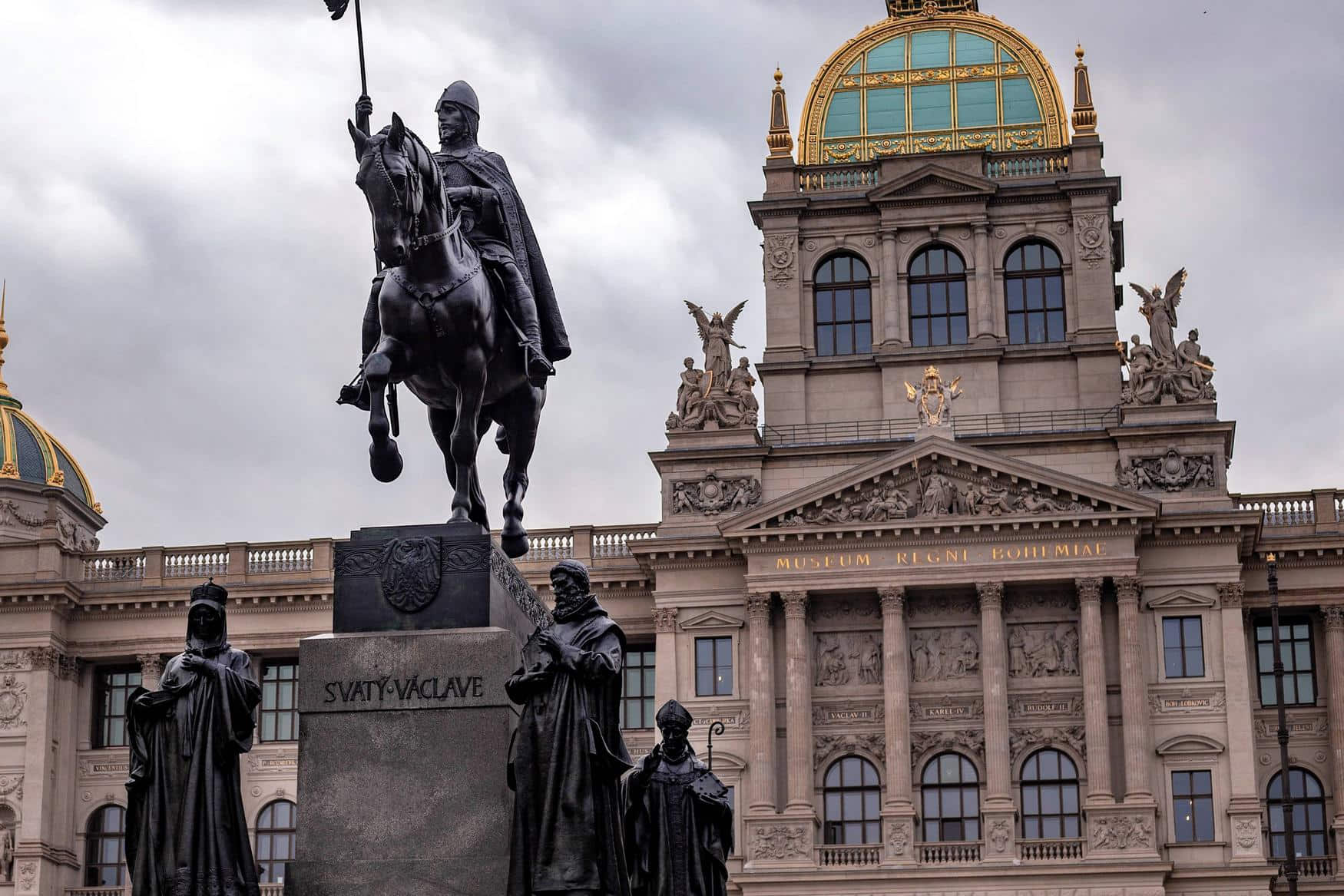Prague's Wenceslas Square is not just the heart of this historical city but also plays host to a grand tribute to a revered figure: the Statue of Saint Wenceslas. Towering above the vibrant cityscape, this symbol of Czech national pride commemorates Saint Wenceslas, the Duke of Bohemia, who has long been considered a martyr and a patron of the Czech Republic. Sculpted by Josef Václav Myslbek, the monument is one of the most significant cultural landmarks of the Czech capital.
Crafted with extraordinary detail, this equestrian statue presents a bold image of the patron saint, conveying his historical role as protector and guardian of the Bohemian lands. Along with Saint Wenceslas, the monument is adorned with representations of four other Czech patron saints, broadening the scope of its significance. For families exploring Prague, this monument offers much more than a photo opportunity; it's a powerful lesson in the bravery and moral fortitude that shaped a nation.
Contents
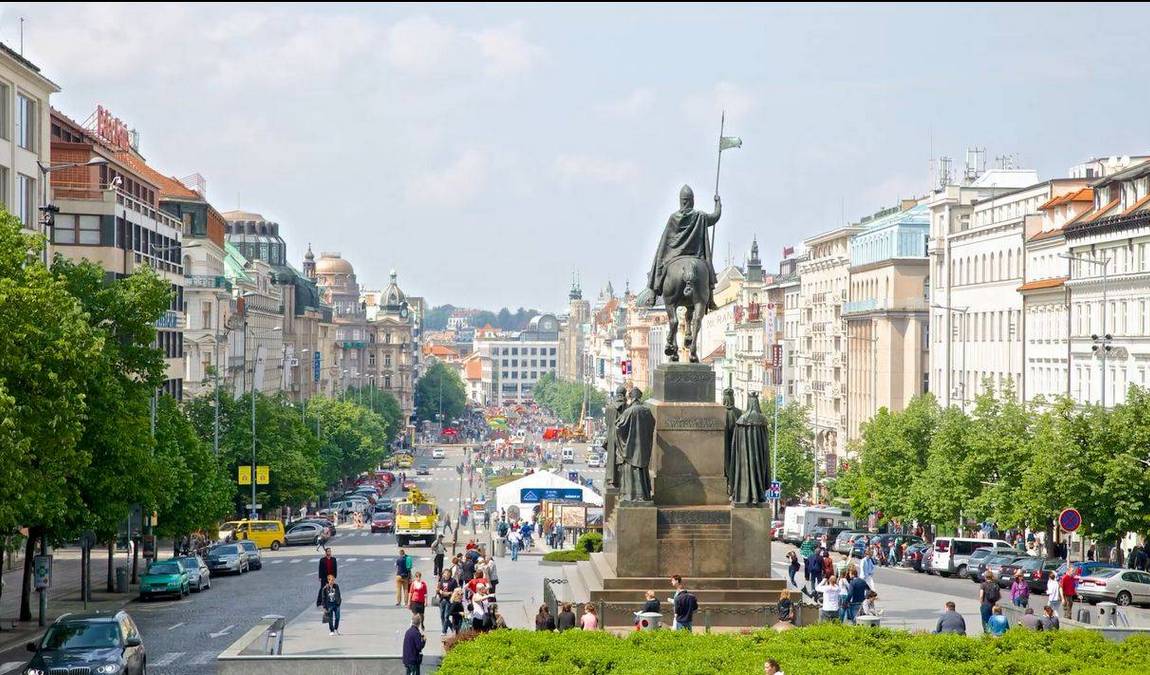 Photo: prague.eu
Photo: prague.eu
As visitors stand at the foot of this imposing statue, located before the backdrop of the illustrious National Museum, the spirit of Socha svatého Václava inspires both young and old alike. A visit to the statue can be a perfect springboard into discovering the rich tapestry of Czech history and culture, providing an engaging experience that melds the allure of ancient tales with the charisma of the modern city surrounding it.
Why It Might Be Interesting for Kids
The Statue of Saint Wenceslas and its surroundings are not just a reverent nod to Czech history but also a place where children can engage with the culture and legends of Prague.
Here are some reasons why the Statue of Saint Wenceslas is worth visiting with kids:
- Interactive History Lesson: Kids can view the statues of Saint Wenceslas and the patron saints as three-dimensional history book pages, bringing to life the stories of these figures.
- Creative Inspiration: The artistic craftsmanship of the statue can inspire budding young artists, highlighting the fusion of history and art.
- Public Square Excitement: Wenceslas Square is a vibrant public space alive with activity, which can be enjoyable for energetic youngsters to explore.
Appropriate Ages:
Children aged 8 and older might find the statue more engaging, as they can appreciate the historical context and the detailed artwork. Younger children might enjoy the lively atmosphere and open spaces of Wenceslas Square.
The statue offers a tangible way to introduce children to Czech culture. They can learn about the importance of Saint Wenceslas as a historical figure and witness the grand scale of public art. It's a sight that opens up a dialogue about history and serves as a stepping stone for further exploration of Prague's treasures.
Historical Context
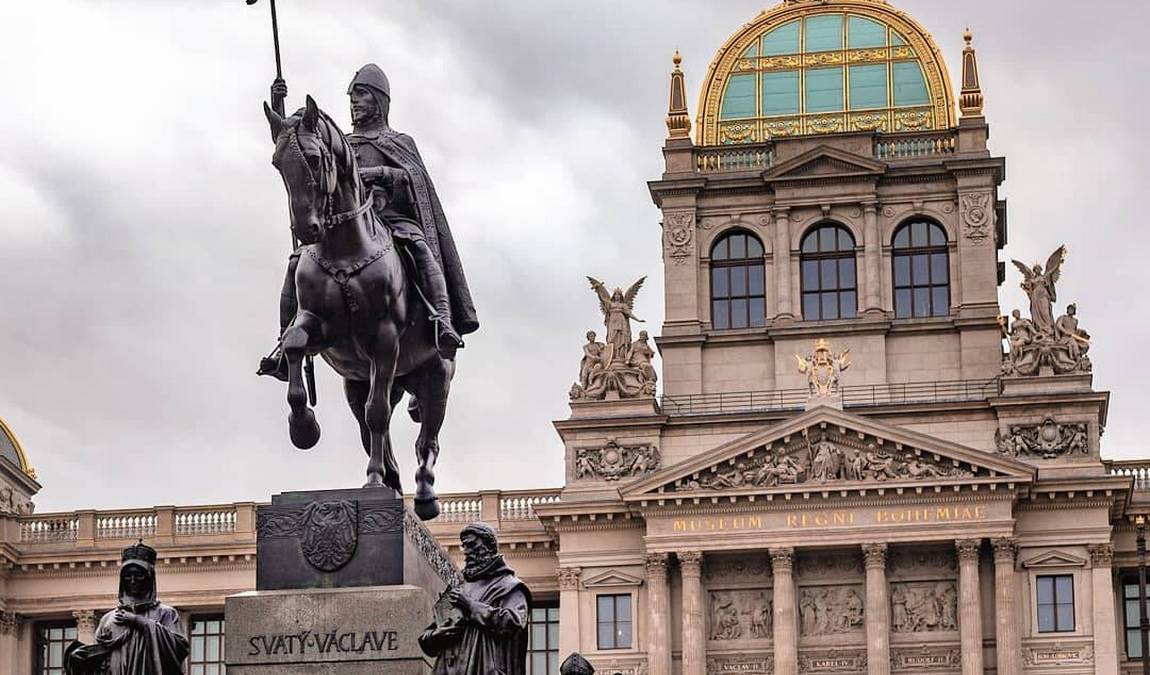 Photo: prague.eu
Photo: prague.eu
One of the most famous sculptures in Prague is deeply entwined with the Czech nation's identity, mirroring its long, storied history through the figure of Saint Wenceslas, the revered Duke of Bohemia.
Saint Wenceslas, known as Václav in Czech, is a symbol of Czech history and independence. As the Duke of Bohemia from 921 to 935, his leadership was marked by his strong Christian values and efforts to unite the surrounding regions. Today, Wenceslas stands as the patron saint of the Czech Republic, embodying the nation's cultural and historical legacy.
Statue Inception and History
The idea of commemorating Saint Wenceslas materialized through the gifted hands of Josef Václav Myslbek, whose dedication spanned decades. The statue of Saint Wenceslas, mounted proudly on his steed, was forged as part of Czech independence's centennial. It was architect Alois Dryák who oversaw its design, anchoring the statue as a symbol of national pride in Wenceslas Square.
This site has witnessed vital events in Czech history. The statue's unveiling in 1913 symbolized the state's sovereignty, heralding the deep-rooted aspirations for Czech Independence. It remains a testament to the enduring spirit of Wenceslaus I and the values he championed.
Artistic Details
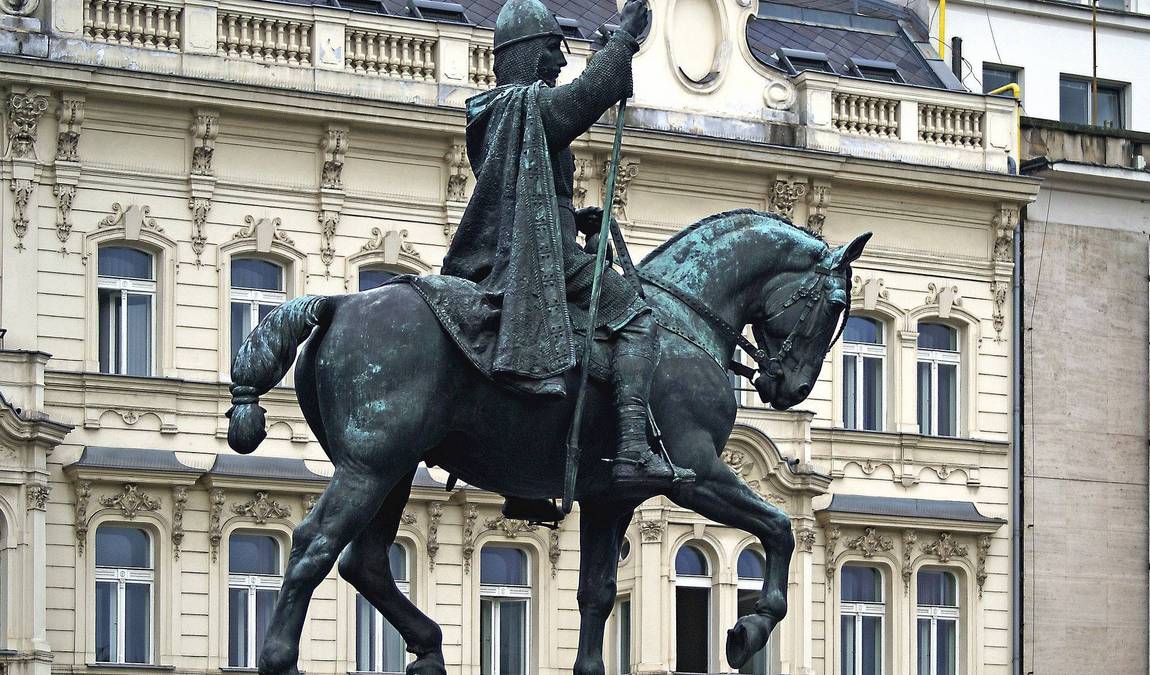 Photo: pixabay.com
Photo: pixabay.com
A visit to the iconic statue of Saint Wenceslas reveals not just a piece of bronze but a work steeped in national pride and artistic prowess. Ideal for families looking to inspire their children with tales of bravery and history, this section delves into the creation and significance behind the equestrian sculpture dominating Wenceslas Square.
Sculptor Josef Václav Myslbek
Josef Václav Myslbek, a name etched in Czech history, diligently crafted the Saint Wenceslas statue over nearly four decades. His dedication to detail and deep understanding of Czech tradition enabled him to create a sculpture symbolizing national identity. This renowned Czech sculptor is celebrated for his role in the Czech National Revival movement, leaving behind a legacy carved into the very soul of Prague.
Statue Descriptions
The bronze sculpture is at the upper end of Wenceslas Square in front of the National Museum. It reaches a height of 5.5 meters, with Saint Wenceslas proudly poised atop his steed. This combination speaks volumes about the careful thought put into every inch of this national treasure. Each element of the statue's design — from the lifelike muscularity of the army stallion to the serene determination on the face of the saint — is a testament to Myslbek's skill in bringing his subjects to life.
The equestrian statue stands for more than aesthetic pleasure. It carries deep symbolism, with Saint Wenceslas holding a pike, representing his role as protector of the Bohemian lands. Surrounding the statue's base are representations of other patron saints of the Czech Republic, cementing the work's status as a homage to Czech heritage and a piece of art that tells the story of a nation's past, present, and aspirations for the future.
Cultural Impact
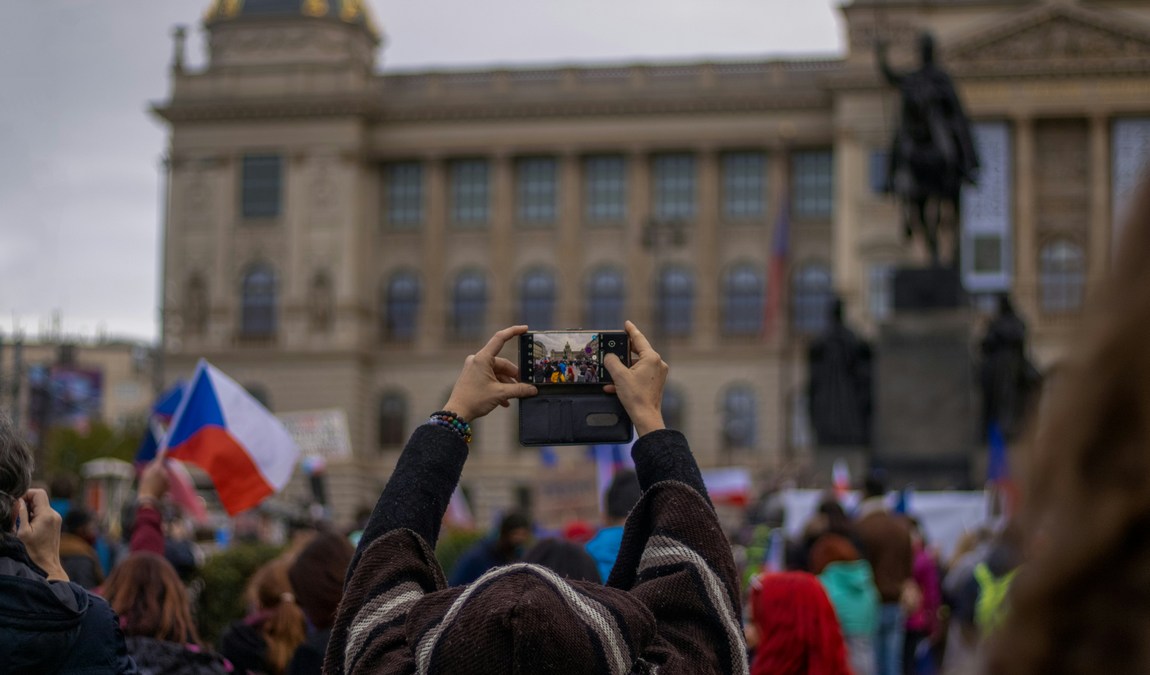 Photo: unsplash.com
Photo: unsplash.com
The Statue of Saint Wenceslas echoed the nation's voice during pivotal moments of history. This sculpture is a linchpin of Czech identity, serving as both a symbol of faith and a beacon for social and political gatherings.
The Statue of Saint Wenceslas is a powerful emblem of Czech culture and national pride. Saint Wenceslas, the Czech Patron Saint, is an enduring symbol of ethical leadership and the protector of the Czech lands. His statue ambles amongst the legends of Czech history and is a revered representation of the nation's saints. As families with young ones marvel at the equestrian figure, they are often told tales of his bravery and virtues, illuminating Czech cultural values.
Public Events and Demonstrations
Over the years, the space around Saint Wenceslas has been a stage for numerous public events and demonstrations. It's where the country's spirits have soared during times of triumph and where the collective heart has weathered times of trial. In front of the National Museum, crowds have historically gathered here to voice their hopes and dissent, marking Wenceslas Square as much a tourist attraction as it is a platform for democracy in action.
As a witness to these events, this statue is a testament to the country's enduring spirit and a chapter in the ongoing story of the Czech people.
Location and Vicinity
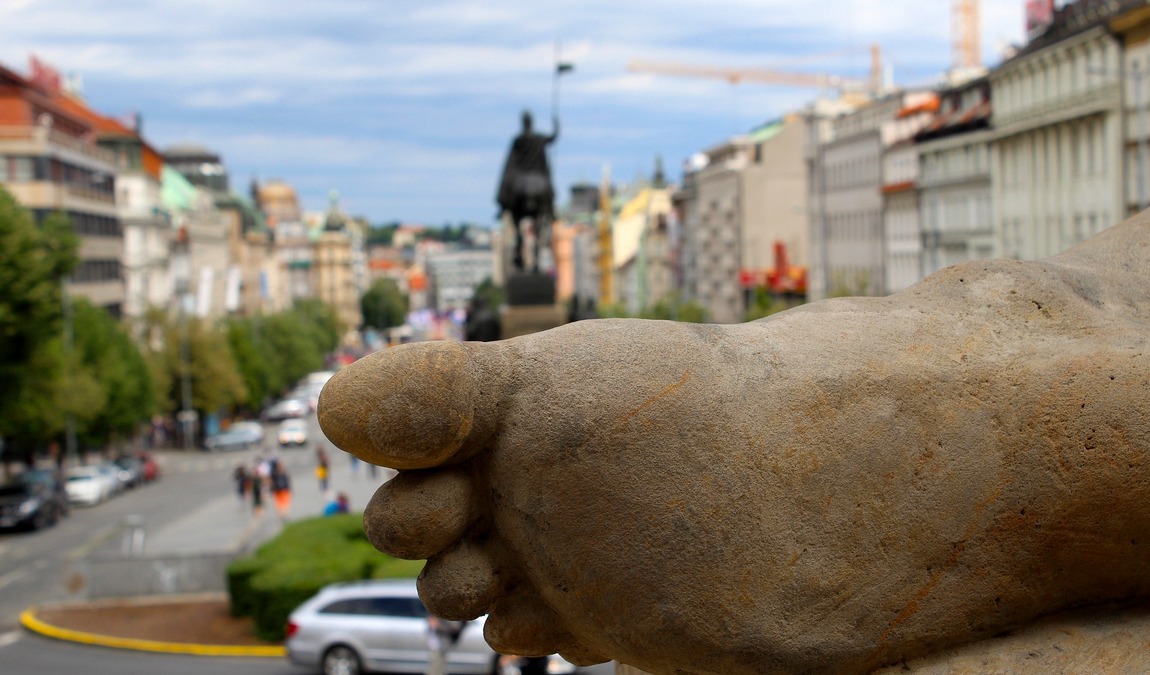 Photo: pixabay.com
Photo: pixabay.com
The majestic Statue of Saint Wenceslas takes pride of place in the vibrant heart of Prague's Wenceslas Square, a cultural and historical hub that has been witness to many of the city's significant events. This central location boasts a bustling atmosphere, with many amenities catering to the needs of families and travelers alike.
Be sure to visit the Film Legends Museum of Prague with your children, within walking distance of the square and the statue.
Wenceslas Square and Surroundings
Wenceslas Square, known locally as Václavské Náměstí, is not just a square but a long boulevard in Prague's New Town, brimming with history and modern-day commerce. The square is lined with notable buildings, including the National Museum at its upper end, often referred to as Muzeum due to its proximity to the metro station of the same name. Families can enjoy the ease of getting around, with the Muzeum Metro station as a central public transit node.
- Metro: Muzeum (Lines A & C)
- Tram: Multiple lines serving the area
- Points of Interest: National Museum, Prague State Opera
Václavské Náměstí
A cherished emblem of Czech heritage, the statue oversees the avenue, embedded in Prague's New Town – a district characterized by its grand commercial vibrancy with shops, department stores, and more. Visitors can marvel at the blend of historic buildings and modern establishments, creating a fascinating architectural tapestry.
- Shopping: Wide selection of shops and department stores
- Architecture: Historical and contemporary buildings
Family Dining Options
After taking in the sights, families can relax at one of the many restaurants and cafes offering an array of culinary delights suitable for children and adults. Whether seeking traditional Czech fare or international cuisine, dining options around Wenceslas Square cater to every palate. Looking for a place to stay? The vicinity is dotted with various family-friendly hotels, ensuring a comfortable base for exploring the wonders of Prague.
- Cuisine: Czech and international options
- Accommodations: Range of family-friendly hotels
For those visiting St. Wenceslas Statue in Prague, here are some recommended restaurants and cafes in the area:
- Oliver's Coffee Cup (Václavské nám. 804, 110 00 Nové Město)
- Popeyes Louisiana Kitchen (Václavské nám. 58, 110 00 Nové Město)
- Výtopna Railway Restaurant - Wenceslas Square (Václavské nám. 802/56, 110 00 Nové Město)
From its central location to its diverse dining and shopping options, Wenceslas Square and the surrounding area provide a perfect backdrop for families seeking a historically rich yet convenient experience in the heart of Prague.
Best Time to Visit
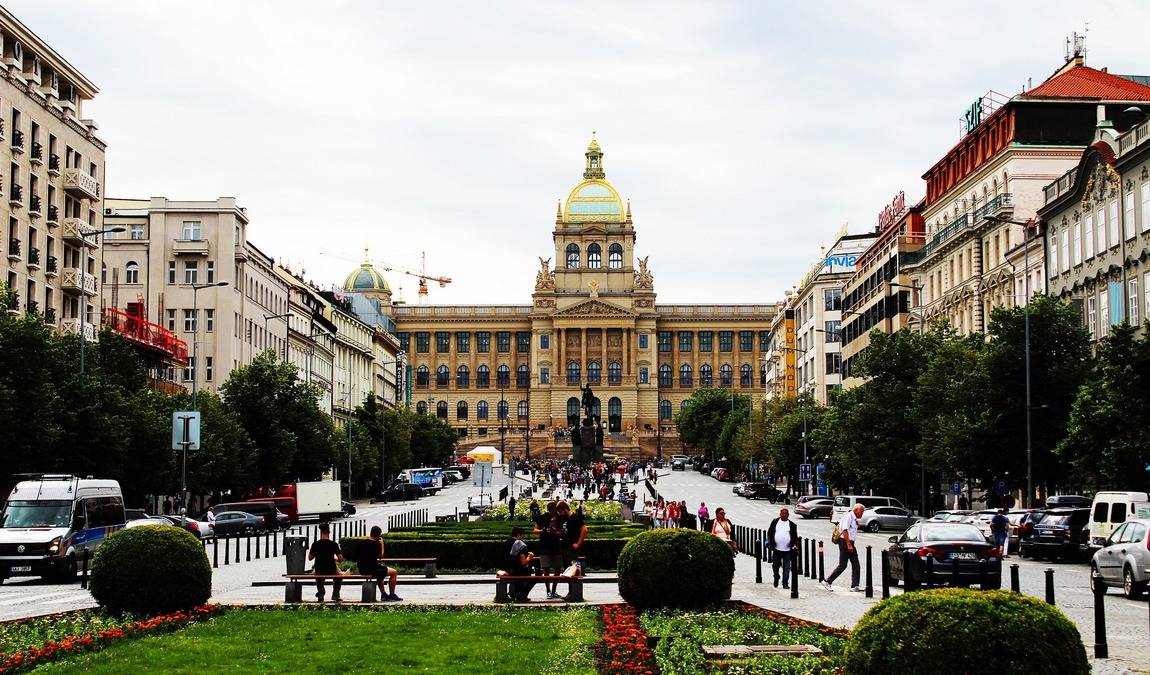 Photo: pixabay.com
Photo: pixabay.com
Visiting the majestic Statue of Saint Wenceslas in Prague can be a highlight for families traveling with children. To fully appreciate this historical monument, timing your visit is critical.
Weather-wise, the best period to visit is during the spring months (April to June) or early fall (September to October). Temperatures are mild, perfect for children to enjoy the outdoors comfortably, and the square is not overly crowded.
Considering the days of the week, weekdays are preferable as they tend to be less crowded than weekends. This allows for a more relaxed experience, where families can take their time to admire the statue and learn about its significance.
The ideal time for a visit would be in the morning, just after opening hours. Early birds will relish the quiet ambiance as the square gently wakes up, free from the hustle and bustle of peak tourist times.
| Season | Day | Time |
|---|---|---|
| Spring/Fall | Weekday | Morning |
Remember to bring a camera, as the morning light provides a beautiful glow to the bronze equestrian statue, creating an exceptional backdrop for family photos. With some planning, a visit to the Statue of Saint Wenceslas can be educational and memorable for visitors of all ages.
How Long Does It Take to Attend?
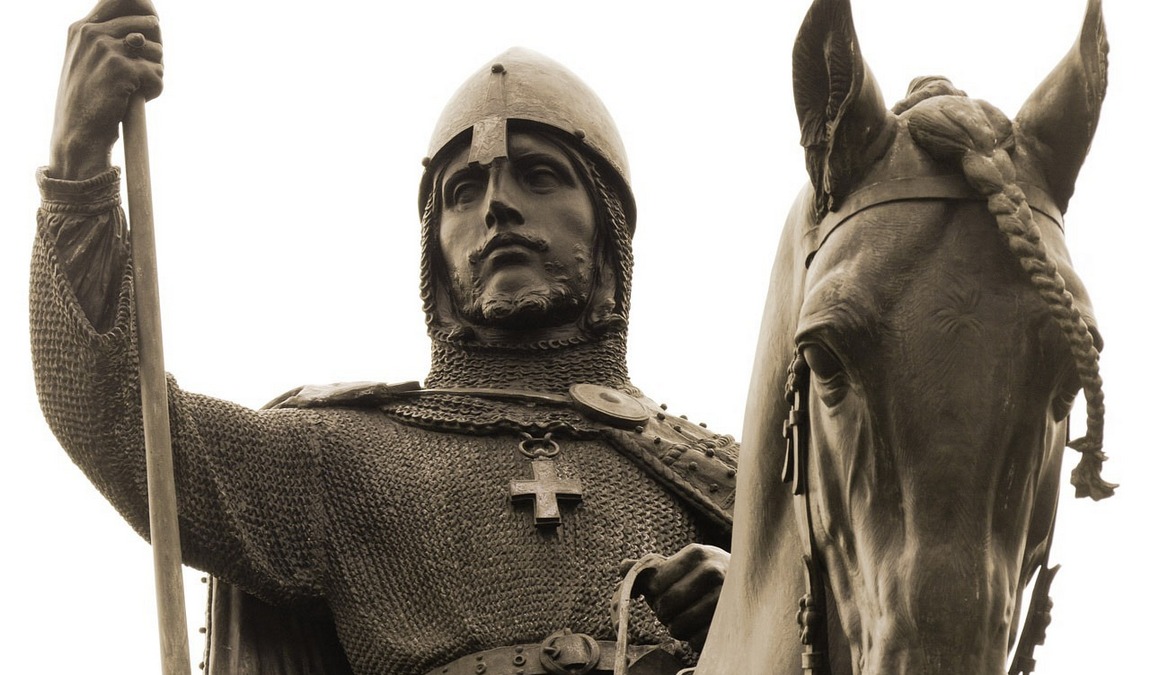 Photo: pixabay.com
Photo: pixabay.com
When planning a family visit to the iconic Statue of Saint Wenceslas in Prague, it's helpful to consider timing to ensure a leisurely and educational experience for all.
Estimated Duration:
- Short Visit: < 30 minutes
- Extended Visit: 1 hour
For a quick stop, visitors typically spend around 15-30 minutes admiring the statue and taking photos. Families often find this sufficient to capture memories and enjoy the grandeur of the statue.
However, planning for an hour is advisable for those intrigued by history and wishing to appreciate the statue's details and surrounding area fully. This allows time for exploration and a brief rest on the benches nearby.
Timing Tips:
- Morning light provides excellent photo opportunities.
- Weekdays often see fewer crowds.
Travel to the Statue:
- Tram lines: 3, 5, 9, 14, 24
- Nearest stop: Václavské náměstí (5-minute walk)
- Walking from Prague Castle: ~30 minutes (ideal for stretching little legs)
Remember, each family's experience may vary slightly, depending on interest levels and pace, especially when considering the needs of children. It's always best to allow a cushion of time for unplanned discoveries and any questions curious young minds might have about the artistry and history of this majestic statue.
Is Statue of Saint Wenceslas Worth Visiting?
Visiting the Statue of Saint Wenceslas can be a fulfilling experience for families exploring Prague. Located at the vibrant Wenceslas Square, the statue is a testament to Czech heritage and offers educational and cultural value.
Attraction Highlights:
- Historical Significance: The statue commemorates Wenceslas I, Duke of Bohemia, a revered figure in Czech history.
- Cultural Experience: Families can learn about the notable Czech patron saints depicted at the base of the statue, enhancing cultural understanding.
- Photography Opportunity: It serves as a splendid backdrop for family photos.
- Accessibility: The statue is easily reachable by metro, making it convenient for visitors with children.
Families who enjoy combining leisure with learning will find the statue particularly engaging. Children often marvel at the grandeur of the equestrian figure, while parents appreciate the artistry and historical narratives attached to it.
The area around the statue bustles with activity, giving families a chance to soak in the local atmosphere of Prague. Nearby, there are many shops and cafes, allowing for a pleasant break after admiring the statue.
Statue of Saint Wenceslas is worth visiting for its accessibility, educational value, cultural knowledge, and as a centerpiece of Czech history that continues to inspire the locals and awe visitors.




